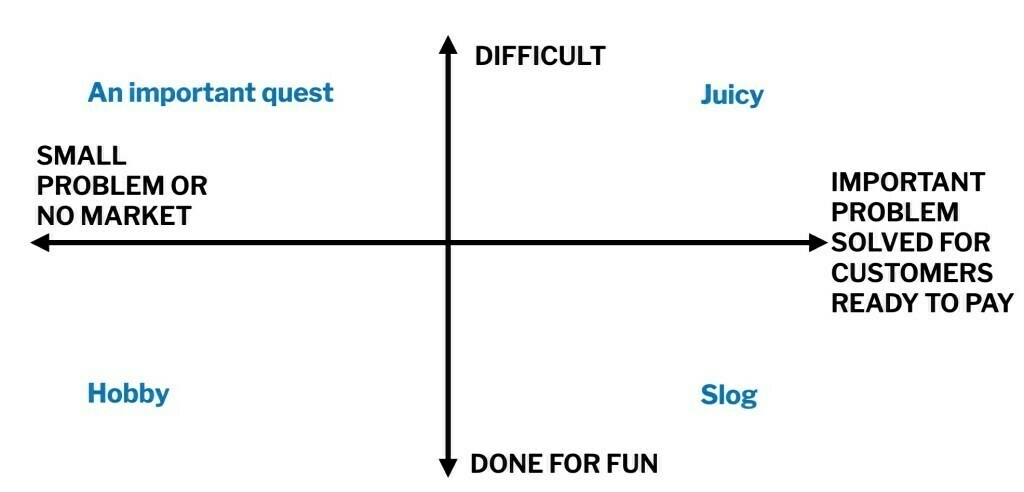Monetising a hobby is different to solving a difficult problem for people ready to pay
Life is never as simple as a 2x2 matrix, but they’re incredibly useful for helping illustrate a key message. In this post, Seth Godin uses one to make the obvious-if-you-think-about-it point that trying to monetise a hobby is a different thing to solving a difficult problem for a group of people who are willing to pay for a solution.
I’ve been thinking about this kind of thing a lot recently given the ongoing need for WAO business development. The advice, which I’m sure is extremely sound, is to find a group of people or type of organisation that you “wish to serve” and then find out as much about them as possible so you can solve their problem.
The trouble is that… doesn’t sound very interesting? Perhaps I’m wrong, and I reserve the right (as ever!) to change my mind, but I’d rather follow my interests and try and find aligned people and organisations willing to pay for the outputs.

All too common are ‘fun’ businesses where someone finds a hobby they like and tries to turn it into a gig. While the work may be fun, the uphill grind of this sort of project is exhausting. If it’s something that lots of people can do and that customers don’t value that much, it might not be worth your time. Taking pictures, singing songs or playing the flute are fine hobbies, but hard to turn into paying jobs.Source: The slog, the hobby and the quest | Seth’s BlogOn the other hand, in the top right quadrant, there’s endless opportunity and plenty of work for people who can do difficult (unpopular) work that is highly valued by customers who are ready to pay to solve their problems. A forensic accountant gets more paid gigs than a bagpipe player.